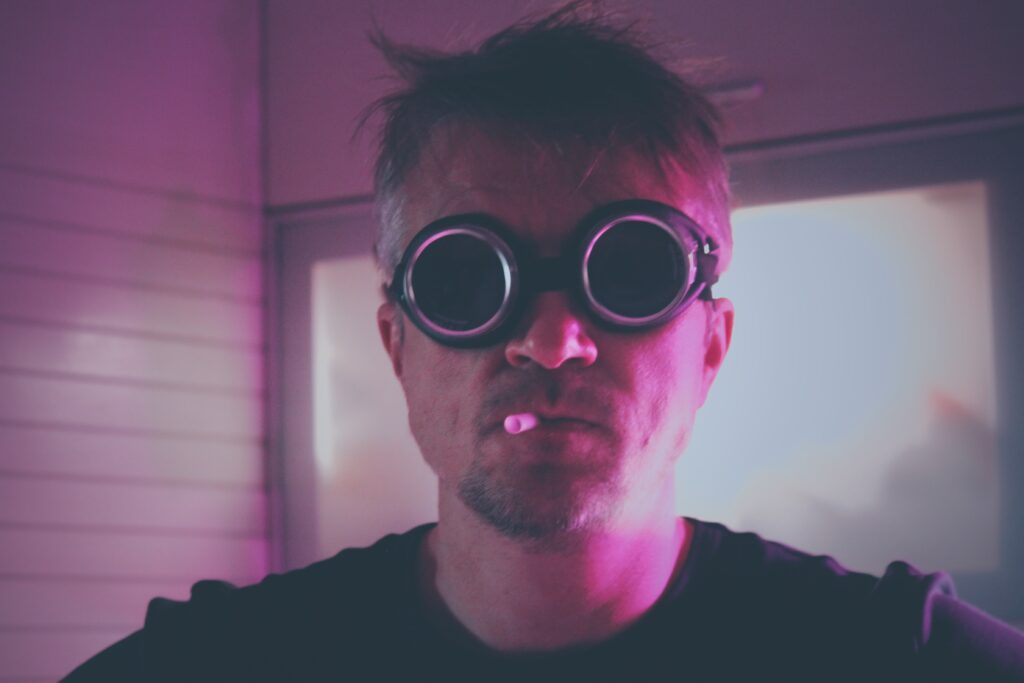
When I look at the world outside my window, I might notice a child on a bike, or a car speeding by. I might see a tree or the neighbor’s gutter, full of leaves. I might see my yard, in need of mowing, or the nice paint job on the house down the street.
My attention is guided, my interpretation of what I see is created, by the goggles I’m wearing in that moment.
I’m not talking about real goggles, though those would surely create an effect. I’m talking about psychological goggles. The goggles created by expectation, by experience, by my own thinking.
When I notice a person passing by, I might have my envious goggles on, noticing their expensive clothes or wearable technology. Or maybe I notice their youth, and feel some envy, along with some disdain, thinking they don’t know how the world works, what they’re up against, that they have it easy.
Or I might have my admiration goggles on, I might be impressed by how healthy they look, how they take care to go for a walk or run, how they wear appropriate shoes, how they invest in the wearable tech that helps them stick to their goals.
I might have my creative googles on, making up stories about what might be going in their lives, where they might work, what they might have had for lunch. I might have my curious goggles on, and be intrigued, I might even stop to ask them about the trail, or their dog.
I might have my friendly goggles on, and say hello, wave and smile.
I might have my introspective goggles on, and not even notice them passing by. I might be instead noticing the way my feet feel in my shoes, the air in my nostrils, the sun on my head.
I might have my daydreaming goggles on, barely paying attention to my surroundings, as my mind wanders to beaches far away, and meals at fancy restaurants.
I might have my complaining goggles on, as I notice the pain in my knees, the soreness of my feet, the cold wet air, and the mud staining my pant legs.
There are actually an infinite number of goggles I could be wearing, things to notice and pay attention to. And most of the time, we don’t consciously put on a specific pair.
Occasionally, I’ll think to put on my ‘awe’ goggles, and deliberately bask in the awesomeness of the natural world around me, the awesomeness of humanity’s creative, clever resourcefulness. I might put on the goggles of fraternity, experiencing a feeling of kinship with my fellow humans, that connection and oneness that comes with seeing that everyone is essentially the same, in a fundamental way, before our thinking, before we put on our goggles.
But most of the time, I don’t choose my goggles. Even in this unmindful state, though, I’m still aware that I’m wearing goggles, that I’m experiencing the world through my thinking.
It might be possible to take off the goggles, in some way, I think this is what enlightenment is, but of course, you have to realize you have goggles on before you can take them off.
So what creates our goggles?
They are created, I think, by a combination of our immediate thinking in the moment, and our experiences of the past.
We see things through complex goggles, that fill in meaning, identify things, assert intentions and purposes. If I’ve never seen a horse before, my goggles will present that animal differently than the goggles of someone who has ridden them for years. But we’re both wearing goggles, the reality of the horse isn’t different for one or the other. Only the way it looks, what it means, is different.
Our goggles are unique. No two people have the same goggles, and our goggles change moment by moment.
But there is value in seeing that we are wearing them, and they are difficult if not impossible to take off.
Empathy starts with realizing that you are wearing goggles, and so is everyone else. And those goggles determine how we see the world, moment by moment.